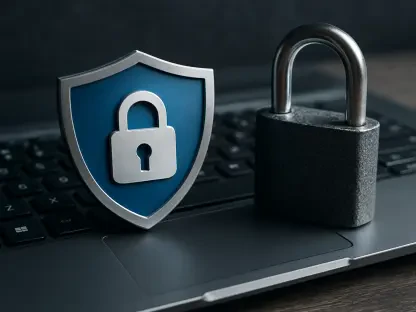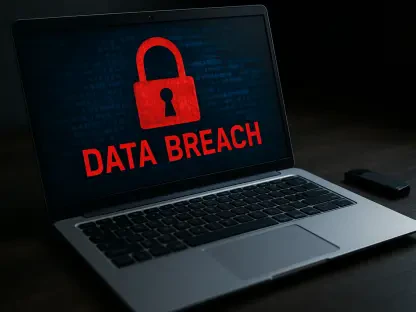In the ever-persistent battle against cybercrime, a recent incident has once again spotlighted the vulnerabilities faced by software users worldwide. Attackers have successfully tampered with SonicWall’s NetExtender VPN application to craft a trojanized version that stealthily siphons off sensitive user data. The compromised iteration of this application acts as a covert tool for attackers, who utilize it to exfiltrate user credentials to a remote server under their control. With such incidents becoming increasingly sophisticated, the event serves as a chilling reminder of the vigilance required by both users and companies in securing digital spaces. As this cybersecurity breach unfolds, SonicWall and its partners collaborate to counteract the threat and prevent recurrence.
Crafting the Trojanized Version
The meticulousness of the attack is evident in the way the threat actor manipulated the application. The attacker cleverly integrated malicious components within the installation package, ensuring the seamless operation of their code alongside the original software. By distributing an installer that parodied an enterprise-grade application, the modified package contained specific components engineered to extract configuration data soon after the installation process. This approach is increasingly prevalent among malicious actors who capitalize on the widespread use of legitimate applications to introduce malware into unsuspecting systems, thereby unearthing valuable user information.
A critical element in the deception was the digital signature applied to the compromised installer, which aimed to mislead victims into believing in the application’s authenticity. The digital certificate, issued under the guise of “CITYLIGHT MEDIA PRIVATE LIMITED,” shares a name with a legitimate company incorporated in India, though concrete ties to the hacking campaign remain unverified. By altering the components “NeService.exe” and “NetExtender.exe,” the attacker bypassed the original software’s digital certificate verification process and incorporated additional malicious code. When users attempted to connect via the VPN, the injected code executed unauthorized validation, transmitting critical information including usernames, passwords, and domain details to a specific IP address.
Response and Mitigation Efforts
In response to the breach, SonicWall swiftly liaised with Microsoft’s Threat Intelligence team to mitigate the fallout and reinforce its defenses against further exploitation. This collaboration resulted in the identification and removal of fraudulent activity, enhancing security tools to detect the compromised installer, and revoking the certificate issued to “CITYLIGHT MEDIA PRIVATE LIMITED” to thwart future incursions. This reaction highlights the importance of rapid and coordinated responses when dealing with cybersecurity threats to minimize harm to end-users and secure digital infrastructure.
Furthermore, SonicWall emphasizes the cruciality of relying solely on trusted sources for software acquisition. SonicWall users are specifically advised to download their software through sonicwall.com or mysonicwall.com to minimize the risk of encountering tampered versions. Throughout this ordeal, indicators of compromise were identified, underscoring the indispensable role that user vigilance plays in recognizing potential threats. These efforts underscore a comprehensive strategy toward securing devices and connections, minimizing vulnerabilities, and safeguarding sensitive information.
Broader Implications and the Road Ahead
As cybersecurity experts delve deeper into the ramifications of similar threats, the broader landscape of vulnerabilities becomes increasingly apparent. Insights from Rapid7’s Lonnie Best reveal this attack’s alignment with other cyber campaigns employing similar methods, such as exploiting search engine optimization (SEO) poisoning and manipulating advertising services to propagate malware. The forged certificate approach mirrors tactics observed in other campaigns, where attackers seek to enhance perceived legitimacy by obtaining certificates under lesser-known company names, thus sowing distrust and confusion among potential victims.
The dedication of cybersecurity professionals remains vital in tracing and neutralizing these threats. While SonicWall has not identified the direct involvement of its subdomains in the malware distribution, research suggests similar compromises may have affected other software vendors. SonicWall’s Vice President of Software Engineering, Soumyadipta Das, expresses optimism in identifying the threat actor, acknowledging the critical importance of ongoing collaboration among cybersecurity entities in dissecting and curtailing similar campaigns. The collective expertise in this field strengthens the defense mesh against increasingly cunning cyber adversaries.
A Call for Proactive Cybersecurity Measures
In the ongoing struggle against the pervasive threat of cybercrime, a recent breach has again highlighted the vulnerabilities faced by software users around the globe. Hackers have compromised SonicWall’s NetExtender VPN application, creating a version that silently harvests sensitive user information. This altered version serves covertly as a tool for cybercriminals, enabling them to extract user credentials and send the data to a server they control remotely. The escalating complexity of such attacks underscores the crucial need for constant vigilance from both users and companies aiming to safeguard digital environments. This cybersecurity breach showcases the continual risks, prompting SonicWall and its partners to actively work together to combat the threat and prevent further incidents. Their collaboration aims to reinforce security measures and create a more resilient defense against the ever-evolving tactics of cybercriminals, emphasizing the importance of proactive approaches to securing digital networks and data integrity.









